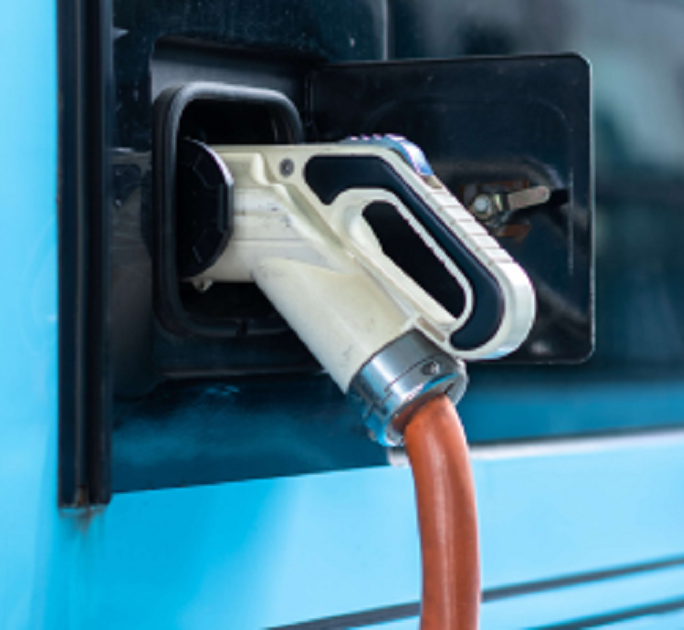The drive for sustainable mobility
What obstacles does the automotive industry face on its journey towards decarbonisation, and what support can the finance industry offer?

The automotive sector will play a crucial role in helping the world confront climate-change risk. Emissions from the sector – from passenger cars to heavy goods vehicles – account for around 12 per cent of all global emissions, according to the World Resources Institute1. Across Asia, the challenge is particularly acute: the region is home to 88 of the 100 most polluted cities in the world2, as well as six of the top 10 countries most affected by climate risks; the automotive sector can therefore expect increasing pressure to help with the clean-up3.
The good news is that Asia is making progress, with adoption of cleaner electric vehicles (EVs) accelerating in key automotive markets across the region. In China, EVs accounted for 24 per cent of all new passenger vehicle sales in 20224. And while other countries in the region are some way behind – South Korea, for example, is the next best performer, with EVs accounting for 10 per cent of sales5 – the direction of travel is clear. South Korea and Japan have announced plans to ban sales of vehicles powered by internal combustion engines by 2035; in the ASEAN region, Singapore, Thailand and Vietnam are adopting similar measures, while Cambodia and Indonesia are working towards targets in this regard6.
EVs provide economic opportunity
The trend towards EVs is reordering the global industry landscape, with Asia well positioned to capture opportunities. As Danielle Fallin of the Center for Strategic & International Studies set out in a recent study on EVs: “Global efforts to diversify supply chains, combined with the drive to adopt green technology, have left an opportunity for EV production ripe for the taking, especially in South-east Asia,” she explained. Ffor example, Asia is already a global leader in EV battery production, with the top five manufacturers based in China or South Korea. Indonesia and Australia, meanwhile, are rich sources of the raw materials required for battery production.
Indeed, despite production roadblocks and supply chain shortages, companies in the automotive industry continued to focus on the decarbonisation agenda. “There is still much work to do,” says Rita Rai Sengupta, Head of Global Automotive at Asia’s DBS Bank. “The pace of adoption of EVs is still not in line with the International Energy Agency’s glidepath towards net zero emissions by 2050 under the Paris Agreement.” Moving more quickly will require effort and collaboration from a wide range of stakeholders, both to drive EV demand and production, and to support the new infrastructure required for a rapidly growing electrified fleet.
But automotive manufacturers – and their extended supply chains – are showing their ambition. For example, Volvo, Mercedes-Benz and GM all aspire or have committed to fully electric fleets by 2035 or earlier7. Legacy volume players such as Toyota and VW, which together accounted for 24.6 per cent of global light vehicle volumes in 2022, can play a very important role in the industry’s pace of electrification8. Policymakers can drive change, too.China has embarked on a $1.4tn digital infrastructure public spending programme, which includes funding for EV charging stations9.
What role can banks play?
The finance sector must also play its part. DBS Bank, for example, has published demanding targets for reductions in financed emissions accounted for by automotive sector clients; it aims to more than halve emissions by 2030, and reduce them to zero by 2050.
That will require DBS Bank to provide further support to those bank customers already performing strongly in terms of their decarbonisation journeys, extending more funding to the EV value chain, from parts manufacturers to OEMs and from distributors to mobility service providers. The bank also sees itself providing support and advice as clients develop and execute their transition plans. “DBS Bank is helping to facilitate the transition by growing clients that are better placed in the journey, further increasing financing across the EV value chain, and supporting clients to establish plans of action and achieve them,” explains Rai Sengupta.
There will be challenges along the way. Many consumers still feel anxious about making the shift to EVs, worrying about how far vehicles can travel on a single charge, and whether they’ll be able to charge them when they need to. Supply chain problems are also a potential headache, with ongoing disruption to the delivery of lithium, cobalt and nickel, all imperative for battery manufacturing. The production and processing of these materials is geographically concentrated, often in countries where there are concerns about labour market practices and human rights10.
In addition, there are difficulties with holding the automotive sector to account, given the difficulty of collecting and analysing sustainability data. Research from Capgemini suggests only 12 per cent of automotive-sector businesses have fully deployed platforms for measuring, monitoring and reporting on sustainability initiatives.
Drive to succeed
Still, there are plenty of reasons to be positive about Asia’s decarbonisation efforts in automotive. As the International Energy Agency’s Leonardo Paoli points out in a recent report, China is now the world leader on both EV sales and charging infrastructure. Rising sales “could pave the way for quicker market uptake by 2030 if supporting investments and policies are in place”, Paoli adds.
Governments in the region are supportive. Thailand, for example, introduced a range of financial incentives to support EV adoption in 202211. Similar policies in Indonesia support 200,000 electric motorcycles and 36,000 electric cars12. India is also introducing incentives as it works towards a target of having EV sales account for 30% of the market by 203013.
Moreover, automotive businesses are working together to reduce risk; Toyota and BYD, for example, have had a research and development partnership in place since 2020 and have recently launched new EVs together14. But further collaboration with other key stakeholders, including governments and finance providers, will also be crucial if the sector is to drive EV adoption at the pace required to hit decarbonisation targets.
References:
- World Resources Institute (2022). World Greenhouse Gas Emissions in 2019
- World’s most polluted cities, IQAir, 2022
- Global Climate Risk Index 2021
- One in Four Cars Sold in China in 2022 Was an EV, Counterpoint, 2023
- Electric vehicles in S.Korea beat diesel cars in sales, Korea Economic Daily, February 2023
- Indonesia Investments, 2022
- DBS research data
- Policies to promote electric vehicle deployment, IEA, 2021
- Supply Chain Disruptions in the Energy Industry, Foley & Lardner, September 2022
- Thailand Issues New Incentive Package for Electric Vehicle Industry, ASEAN briefing, 2022
- E&T, 2023
- Times of India, 2023
- Toyota reveals two more electric cars for China, CNBC, April 2023



